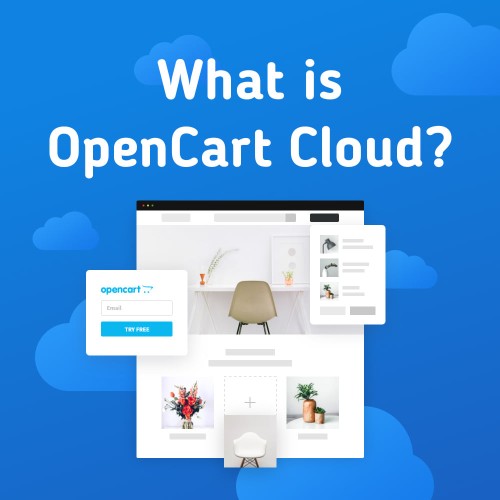In the ever-evolving landscape of e-commerce, customer engagement stands as a pivotal factor determining the success and sustainability of businesses. Over the years, the emergence and evolution of Business-to-Business (B2B) portals have significantly transformed the way companies engage with their customers in the digital realm. These portals play a crucial role in streamlining interactions, fostering relationships, and ultimately enhancing the overall e-commerce experience. This article aims to delve into the profound impact of B2B portals on customer engagement within the realm of e-commerce marketing.
Evolution of E-commerce and the Rise of B2B Portals
The growth of e-commerce, especially Direct 2 Consumer, has revolutionised the way businesses operate, enabling them to reach a global audience and conduct transactions efficiently. Initially, e-commerce platforms primarily focused on Business-to-Consumer (B2C) interactions, catering to individual customers. However, with the expansion of online markets, B2B transactions gained prominence, necessitating specialised platforms to facilitate business interactions among enterprises.
B2B portals emerged as dedicated platforms designed to streamline interactions between businesses. These portals serve as centralised hubs where companies can engage in various activities, including procurement, sales automation, supply chain management, and collaboration. They provide a seamless interface for businesses to conduct transactions, exchange information, and build partnerships, thereby revolutionising the dynamics of e-commerce.
Importance of Customer Engagement in E-commerce
A. Definition and Significance of Customer Engagement
Customer engagement refers to the interaction, involvement, and emotional connection between a customer and a brand. In the context of e-commerce, it encompasses various actions and experiences that customers have with an online business, including browsing, purchasing, providing feedback, and interacting with the brand through different digital channels.
Significance:
Relationship Building: It goes beyond transactions, focusing on building lasting relationships with customers.
Brand Loyalty: Engaged customers are more likely to remain loyal to a brand, leading to repeated purchases.
Word-of-Mouth Marketing: Engaged customers tend to become brand advocates, sharing positive experiences with others.
Data Insights: Engagement provides valuable data and insights into customer preferences, behaviours, and needs.
B. Impact of Customer Engagement on Business Success
Improved Customer Loyalty: Engaged customers are more loyal, making repeat purchases and contributing significantly to revenue.
Increased Customer Lifetime Value (CLV): Higher engagement often leads to a longer association with a brand, increasing the overall value a customer brings to the business.
Enhanced Brand Perception: Positive engagement experiences create a favorable image of the brand, attracting new customers and retaining existing ones.
Higher Conversion Rates: Engaged customers are more likely to convert and make purchases, thereby positively impacting sales metrics.
Reduced Customer Churn: Effective engagement strategies can help reduce customer churn rates, saving costs associated with acquiring new customers.
C. Challenges in Achieving Effective Customer Engagement
Information Overload: In a highly competitive e-commerce environment, customers are bombarded with information, making it challenging to capture and retain their attention.
Balancing Personalization and Privacy: Customising experiences for customers while respecting their privacy preferences presents a delicate balance for businesses.
Consistency Across Channels: Ensuring a consistent and seamless experience across various digital touchpoints (website, social media, email, etc.) is a significant challenge.
Competitive Landscape: Standing out and engaging customers effectively in a market saturated with options poses a considerable challenge.
Enhancing Customer Engagement Through B2B Portals
1. Streamlined Communication and Collaboration
One of the fundamental aspects of B2B portals is their ability to facilitate seamless communication between businesses. These portals offer integrated messaging systems, real-time updates, and collaborative tools that enable efficient information exchange. Enhanced communication fosters stronger relationships between businesses, leading to increased customer trust, ultimately benefiting customer engagement. For businesses operating in industries with specific safety requirements, platforms like OSHAEducationSchool provide the necessary training to ensure compliance and workplace safety.
2. Personalised Customer Experiences
B2B portals allow for personalised interactions tailored to the specific needs of businesses whether to gain followers or boost visibility, Through these platforms, companies can analyse customer data, preferences, and buying behaviours, enabling them to offer customised solutions and services. Personalization enhances the customer experience, leading to higher satisfaction levels and increased engagement.
3. Efficient Procurement and Transactions
Efficiency in procurement and transactions is vital for fostering strong customer relationships through CRM software. B2B portals streamline the purchasing process by offering features such as catalogue management, automated ordering, and secure payment systems. By simplifying these processes, businesses can provide a hassle-free experience to their customers, contributing to improved engagement.
4. Interactive Features and Rich Content Creation
Integrating interactive elements and rich media content within B2B portals elevates user engagement. Videos, infographics, and interactive guides not only educate users but also keep them engaged longer on the platform. Using Seo content writing services help in Optimising these content types with relevant keywords and metadata can potentially improve SEO rankings, drawing in organic traffic seeking informative and engaging content.
5. Data-Driven Insights for Better Decision-Making
B2B portals generate vast amounts of data related to customer interactions, transactions, and market trends. Leveraging advanced analytics and AI-driven insights, businesses can gain a deeper understanding of customer behaviour. These insights empower companies to make data-driven decisions, optimise their strategies, and tailor their offerings to better resonate with their target audience.
Challenges and Opportunities
A. Security Concerns and Data Privacy
Data Vulnerability: B2B portals involve the exchange of sensitive information, making them susceptible to cyber threats and data breaches.
Regulatory Compliance: Adhering to data protection laws and regulations (such as GDPR, CCPA) poses a challenge in maintaining data privacy.
Trust Building: Ensuring robust security measures helps in building trust among businesses while using these portals.
B. Integration Complexities and Technical Challenges
Compatibility Issues: Integrating B2B portals with existing systems or third-party applications might encounter compatibility issues, leading to technical hurdles.
Scalability: As businesses grow, scalability becomes a concern as the portal infrastructure needs to accommodate increasing demands efficiently.
User Experience: Technical complexities can hinder user experience, affecting the adoption and utilisation of the portal.
C. Opportunities for Enhanced Customer Engagement
Personalization and Targeted Engagement: B2B portals enable businesses to gather comprehensive data on customer interactions, facilitating personalised engagement strategies.
Efficient Communication: Streamlined communication channels within portals allow for better engagement between businesses, enhancing collaboration and relationship-building.
Data-Driven Insights: Leveraging the data collected through B2B portals offers opportunities to understand customer behaviour, preferences, and needs, leading to improved services and products.
Future Trends and Innovations in B2B Portals
The landscape of B2B portals continues to evolve rapidly, driven by technological advancements and changing market dynamics. Exploring future trends and innovations provides insights into how these portals will shape the future of business interactions and customer engagement.
AI and Machine Learning Integration
Predictive Analytics: Utilising AI-powered predictive analytics for demand forecasting, inventory management, and personalised customer recommendations.
Enhanced Automation: Implementing AI-driven automation for streamlined processes, reducing manual interventions, and improving efficiency.
Blockchain Integration for Enhanced Security
Immutable Records: Leveraging blockchain technology to create secure, transparent, and tamper-proof records for transactions, contracts, and data exchange.
Smart Contracts: Implementing self-executing smart contracts for B2B transactions, ensuring trust and transparency among parties.
IoT-driven Connectivity
IoT-enabled Supply Chains: Using IoT devices to track and monitor products throughout the supply chain, enhancing visibility and efficiency.
Data Collection and Analysis: Harnessing IoT-generated data and using surveys to collect feedback and gain deeper insights into customer behaviour and preferences.
Enhanced Personalization and Customer Experience
Hyper-personalization: Leveraging advanced data analytics to deliver highly tailored and individualised experiences to B2B customers.
Omni-channel Engagement: Creating seamless experiences across various digital touchpoints, ensuring consistency and continuity.
Legal Services in E-commerce:
Legal Compliance and Risk Management: In e-commerce, staying compliant with laws and regulations is crucial. By enabling businesses to find a lawyer online through B2B portals, companies can easily access legal advice, ensuring they operate within legal frameworks, thus mitigating risks.
Contract Management and Negotiation: E-commerce involves numerous contracts with suppliers, partners, and customers. Online legal services facilitate efficient contract management and negotiation, ensuring that all agreements are fair and legally sound.
Intellectual Property Protection: Protecting intellectual property is vital in the digital marketplace. Online legal services offer easy access to legal expertise in safeguarding trademarks, patents, and copyrights.
Augmented and Virtual Reality (AR/VR) Integration
Immersive Product Demonstrations: Using AR/VR for interactive product demonstrations and virtual showrooms, enhancing the B2B buying experience.
Training and Collaboration: Implementing AR/VR for training modules, remote collaboration, and technical support.
Focus on Sustainability and ESG Practices
Green Supply Chains: Incorporating sustainability practices into B2B portals, emphasising eco-friendly products, and ethical sourcing.
Transparency in ESG Metrics: Providing transparent ESG (Environmental, Social, Governance) metrics to facilitate responsible business practices.
Voice and Conversational Interfaces
Voice-activated Commands: Integration of voice-based commands and conversational interfaces for easier navigation and interaction within B2B portals.
Chatbots and Virtual Assistants: Implementing AI-powered chatbots to provide real-time assistance and support to B2B customers.
Human Touch and Empathy: Customer service representatives bring a unique human touch to interactions. In complex B2B scenarios, where issues might be nuanced, the ability to empathise and provide tailored solutions can make a significant difference.
Conclusion
In conclusion, businesses must recognize the pivotal role of B2B portals in transforming customer engagement strategies and capitalise on their capabilities to thrive in the competitive e-commerce landscape.




Login and write down your comment.
Login my OpenCart Account